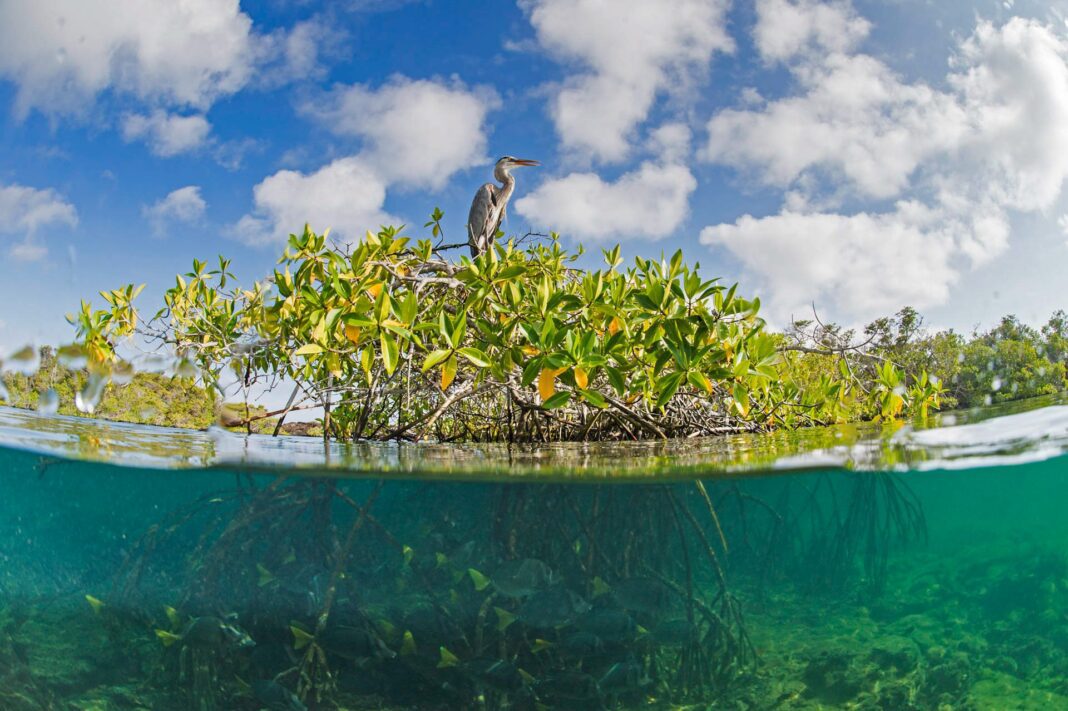
Explore the ecological wonders of mangroves and the significance of International Mangrove Conservation Day on July 26th.
Each year, the world marks July 26th as the International Day for the Conservation of the Mangrove Ecosystem. This commemoration, fostered by UNESCO, underscores the indispensable role of mangroves in maintaining the balance of our planet’s ecosystem. But what makes these trees, which thrive in swampy areas, so crucial to our world’s health?
Understanding the Significance of Mangroves
Mangroves, more than mere trees or shrubs, are essential components of our environment. Found mainly in subtropical and tropical regions, mangroves have the unique ability to survive in saline and brackish waters. They are more than just physical structures – they symbolize resilience, adaptation, and life.
Mangroves are extensively exploited for timber and wood charcoal. However, their utility extends far beyond this. They play an instrumental role in buffering storms, controlling erosion, and protecting coastal belts. Furthermore, they provide breeding grounds for various fish and crustaceans, contributing significantly to the diversity and sustenance of marine life.
The Distressing Decline of Mangroves
Sadly, the past two decades have witnessed a drastic reduction in global mangrove coverage, with an estimated 36% loss due to human activities, natural disasters, and infrastructure development such as agriculture and road construction.
The Role of UNESCO in Mangrove Conservation
As an international organization dedicated to promoting education, scientific research, and cultural exchange, UNESCO acknowledges the need for mangrove conservation. In 2015, it launched the International Day for the Conservation of the Mangrove Ecosystem to raise awareness about the importance of mangroves and the threats they face. UNESCO encourages nations worldwide to participate in preserving this vital ecosystem, recognizing the dire consequences of its loss for biodiversity and human communities alike.
Exploring the Multifaceted Benefits of Mangroves
Embarking on a journey into the heart of mangrove ecosystems reveals a world teeming with life and laden with ecological significance. The following sections will delve into the multifaceted benefits of mangroves, from their invaluable role in erosion control and storm buffering, their function as nurturing breeding grounds for diverse marine species, to their exceptional ability to sequester carbon. By understanding the importance of these swampy sentinels, we illuminate the urgent need for their conservation in our ever-changing world.
Erosion Control and Storm Buffering
Mangroves act as nature’s fortress. Their intricate root systems create a physical barrier against ocean currents and waves, effectively mitigating erosion impacts. The roots hold the soil together, preventing it from being washed away during storms. In regions prone to hurricanes and cyclones, mangroves provide a buffer zone, absorbing the destructive energy of the batteries and reducing the damage on the coastlines.
Breeding Grounds for Marine Life
Another significant function of mangroves is to provide a safe habitat for diverse marine species. Mangroves are often called “nurseries of the sea” due to the shelter and nourishment they offer to juvenile fish, crustaceans, and other marine creatures. The loss of mangrove forests thus spells disaster for these species, undermining the health of our oceans.
Carbon Sequestration
Perhaps less known but no less critical, mangroves are efficient carbon sinks. They absorb vast quantities of carbon dioxide from the atmosphere, converting it into biomass and storing it in their rich soil. This process, known as carbon sequestration, helps mitigate climate change’s effects.
The Realities of Mangrove Exploitation
While the mangrove’s ecological services are indispensable, its economic value has led to overexploitation. The global demand for timber and wood charcoal has placed a tremendous strain on mangrove forests, leading to rampant deforestation and habitat degradation.
Timber and Charcoal Production
Mangroves provide a substantial source of timber for construction, furniture, and fuel in many parts of the world. They are also exploited for charcoal production, an essential source of income for many coastal communities. However, unsustainable harvesting and poor forest management practices have resulted in significant losses to mangrove coverage.
Aquaculture
Aquaculture, specifically shrimp farming, is another leading cause of mangrove deforestation. Large swaths of mangrove forests are often cleared for shrimp ponds. Unfortunately, this short-term economic gain often results in long-term environmental damage, including loss of biodiversity and increased vulnerability to natural disasters.
The Future of Mangrove Conservation
Facing the significant decline in mangrove forests, there is an urgent need for concerted efforts to halt and reverse this trend. The International Day for the Conservation of the Mangrove Ecosystem serves as a reminder of the need for more substantial commitment and action to preserve this critical ecosystem.
Conservation Initiatives
In many parts of the world, initiatives aimed at conserving and restoring mangrove forests are gaining traction. These include establishing protected areas, implementing sustainable forest management practices, and promoting community-based conservation programs.
Education and Awareness
Raising public awareness about the importance of mangroves and their threats is crucial to conservation efforts. Through education, we can foster a deeper appreciation for these vital ecosystems and encourage more people to take action for their protection.
While we have lost a significant portion of our planet’s mangrove forests, there is hope for the future. Through concerted efforts and a shared commitment to preserving our world, we can ensure the survival of these vital ecosystems for generations to come. The International Day for the Conservation of the Mangrove Ecosystem is a reminder that every effort counts and that it’s never too late to make a difference.

































